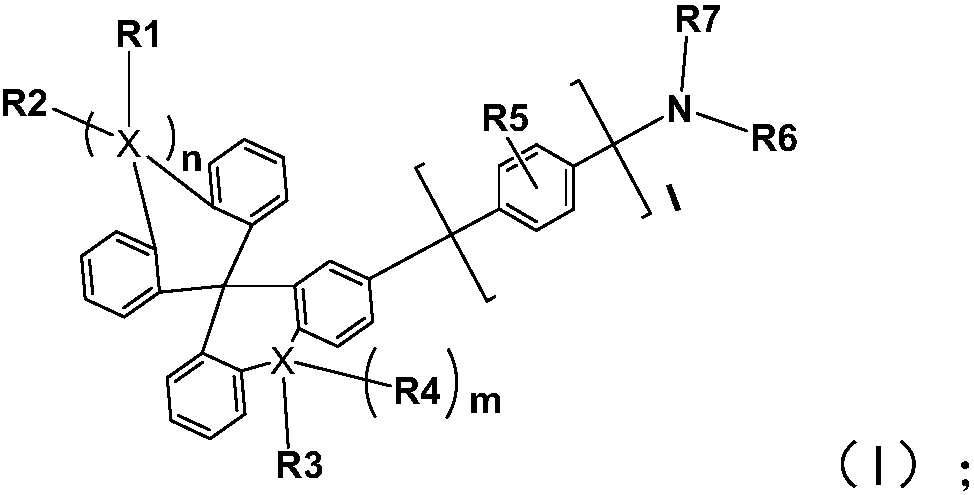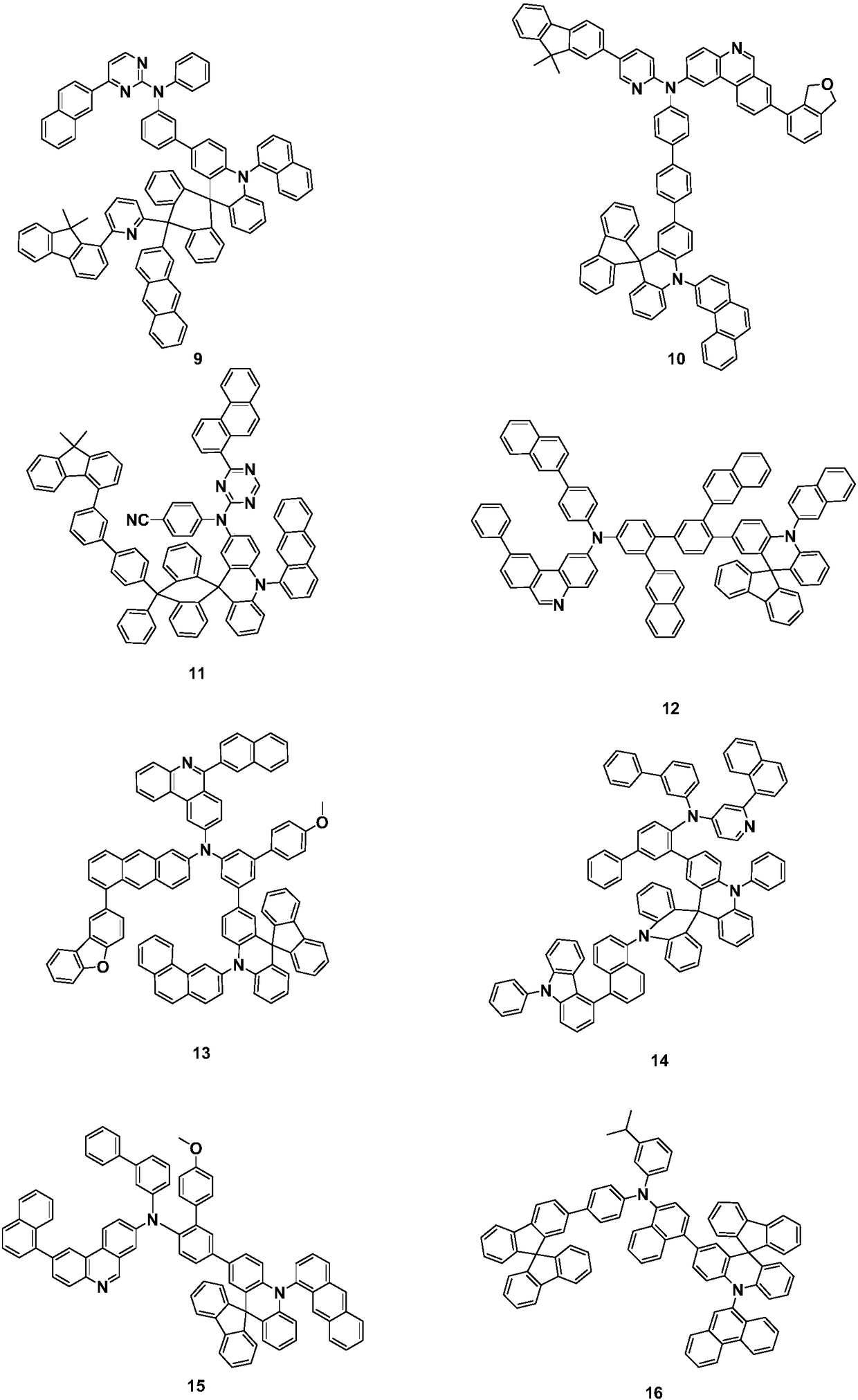Organic electroluminescence luminescent compound, organic electroluminescence luminescent device and application thereof
A technology of luminescence and compounds, which is applied in the field of organic electroluminescent compounds, can solve the problems of high driving voltage, low luminous efficiency of light-emitting devices, and unsatisfactory luminous efficiency, and achieve the effect of reducing driving voltage and improving luminous efficiency
- Summary
- Abstract
- Description
- Claims
- Application Information
AI Technical Summary
Problems solved by technology
Method used
Image
Examples
Embodiment 1
[0059] The synthesis of embodiment 1 compound (55)
[0060] (1) Synthesis of Intermediate A
[0061] [Reaction 1]
[0062]
[0063] Put 19.5g (100mmol, 1.0eq.) of acridone and 20.4g of iodobenzene (100mmol, 1.0eq.) into a dry 2L three-necked flask, then add dry and degassed 800ml of toluene as a solvent, and nitrogen for 15 minutes . Then add 28.8g (300mmol.3.0eq.) sodium tert-butoxide, 1.8g (2%mol) catalyst Pd 2 (dba) 3 and 8.1ml (4%mol) P(t-bu) 3 Toluene solution (m / v, 10%). The temperature was raised to 100° C., and the reaction was carried out overnight for 5 hours. After the reaction is finished, cool to room temperature, add activated carbon for adsorption, filter with suction, spin off the solvent, and recrystallize with toluene and ethanol to obtain 22.5 g of intermediate A with a yield of 83%.
[0064] (2) Synthesis of Intermediate B
[0065] [Reaction 2]
[0066]
[0067] Put 22.5g (83mmol, 1.0eq.) of intermediate A into a 1L three-neck flask, use 400m...
Embodiment 2
[0086] The synthesis of embodiment 2 compound (72)
[0087] (1) Synthesis of Intermediate F
[0088] [Reaction 6]
[0089]
[0090] Put 19.5g (100mmol, 1.0eq.) of acridone and 20.4g of iodobenzene (100mmol, 1.0eq.) into a dry 2L three-necked flask, then add dry and degassed 800ml of toluene as a solvent, and nitrogen for 15 minutes . Then add 28.8g (300mmol) sodium tert-butoxide, 1.8g (2%mol) catalyst Pd 2 (dba) 3 and 8.1ml (4%mol) P(t-bu) 3 Toluene solution (m / v, 10%). The temperature was raised to 100° C., and the reaction was carried out overnight for 5 hours. After the reaction was completed, cool to room temperature, add activated carbon for adsorption, filter with suction, spin off the solvent, and recrystallize with toluene and ethanol to obtain 22.5 g of intermediate F with a yield of 83%.
[0091] (2) Synthesis of Intermediate G
[0092] [Reaction 7]
[0093]
[0094] Put 22.5g (83mmol) of intermediate F into a 1L three-neck flask, use 400ml of DMF as s...
Embodiment 3
[0117] The synthesis of embodiment 3 compound (97)
[0118] (1) Synthesis of Intermediate L
[0119] [Equation 13]
[0120]
[0121] 28.3g (100mmol, 1.0eq.) m-bromoiodobenzene and 20.6g o-bromoaniline (120mmol, 1.2eq.) were dropped into a dry 3L three-necked flask, and then dried and degassed 1000ml toluene was added as a solvent. Nitrogen for 15 minutes. Then 2.9 g (15% mol) of cuprous iodide, 5.9 g (30% mol) of 1,10-phenanthroline and 63.7 g (300 mol, 3 eq.) of potassium phosphate were added. The temperature was raised to 110°C, and the reaction was carried out for 18 hours. After the reaction was completed, it was cooled to room temperature, filtered with suction, the solvent was spun off, and recrystallized with toluene and ethanol to obtain 28.1 g of intermediate L with a yield of 86%.
[0122] (2) Synthesis of Intermediate M
[0123] [Equation 14]
[0124]
[0125] Put 28.1g (86mmol) of intermediate L and 17.9g (86mmol) of anthraquinone into a 2L three-neck f...
PUM
 Login to View More
Login to View More Abstract
Description
Claims
Application Information
 Login to View More
Login to View More - R&D
- Intellectual Property
- Life Sciences
- Materials
- Tech Scout
- Unparalleled Data Quality
- Higher Quality Content
- 60% Fewer Hallucinations
Browse by: Latest US Patents, China's latest patents, Technical Efficacy Thesaurus, Application Domain, Technology Topic, Popular Technical Reports.
© 2025 PatSnap. All rights reserved.Legal|Privacy policy|Modern Slavery Act Transparency Statement|Sitemap|About US| Contact US: help@patsnap.com



